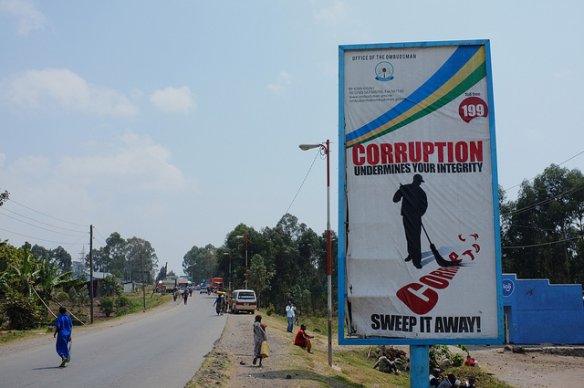International migration and corruption have several things in common: they play key roles in development processes, feature prominently on policy agendas, and are the subject of large research literatures. However, the connections between migration and corruption, whether in the country of origin or along migration trajectories, remain relatively unexplored.

An anti-corruption billboard near the Rwanda-Uganda border crossing (Photo: Fred Inklaar via Flickr)
The migration-corruption nexus has important implications for migrants, policymakers, practitioners, and local communities affected by emigration and immigration. Although focused attention to corruption remains rare in migration research, corruption frequently comes up as a topic because it affects people’s lives. For instance, one of the studies that inspired this article set out to examine the reintegration of return migrants and discovered that corruption was an overwhelmingly important issue, not foreseen at the outset.
The concept of a nexus implies that there are many connections and that the effects go in both directions. Migration can affect both the practice and perceptions of corruption. And conversely, corruption can induce, facilitate, or obstruct migration. Corruption can also modify the effects of migration on society.
This article outlines ten specific ways in which corruption shapes migration or vice versa, before exploring three case studies that illustrate some of these effects and demonstrate how the connections manifest in specific settings. But first, what exactly is corruption?
- Read more at the Migration Policy Institute, where the full text was published 12 May 2015.